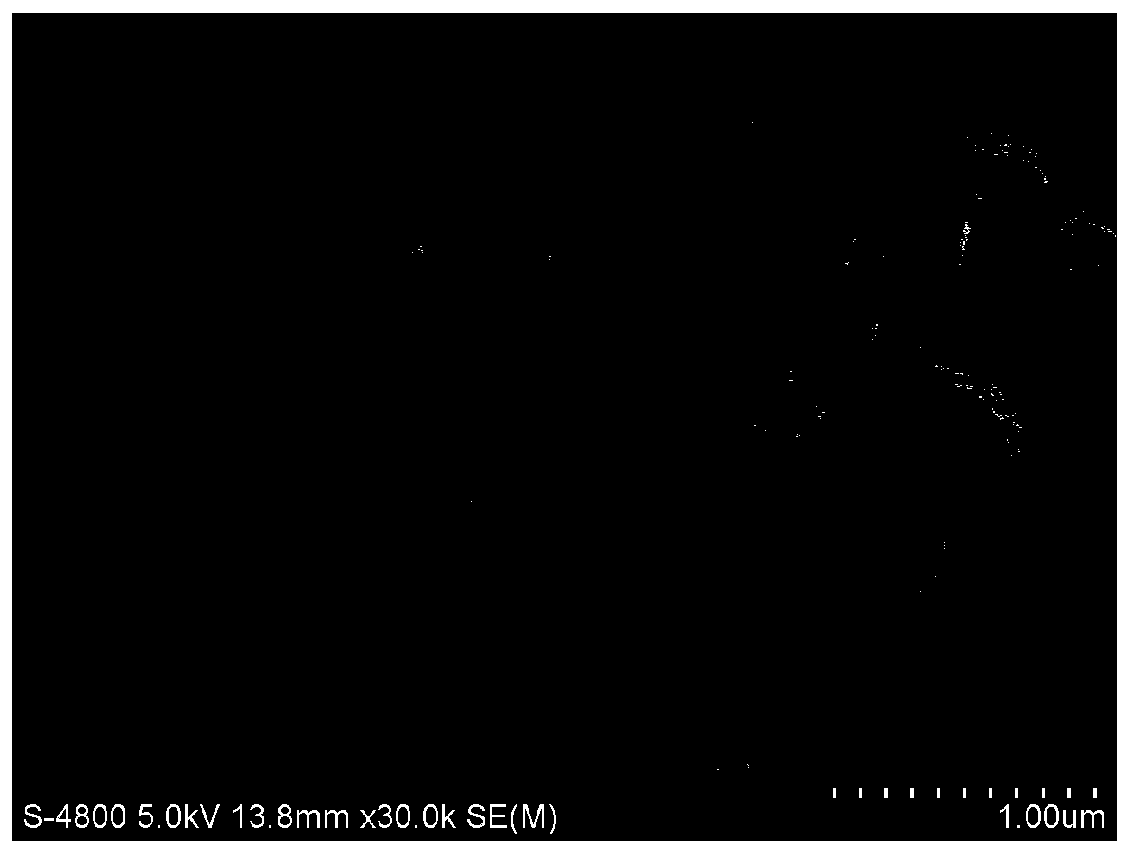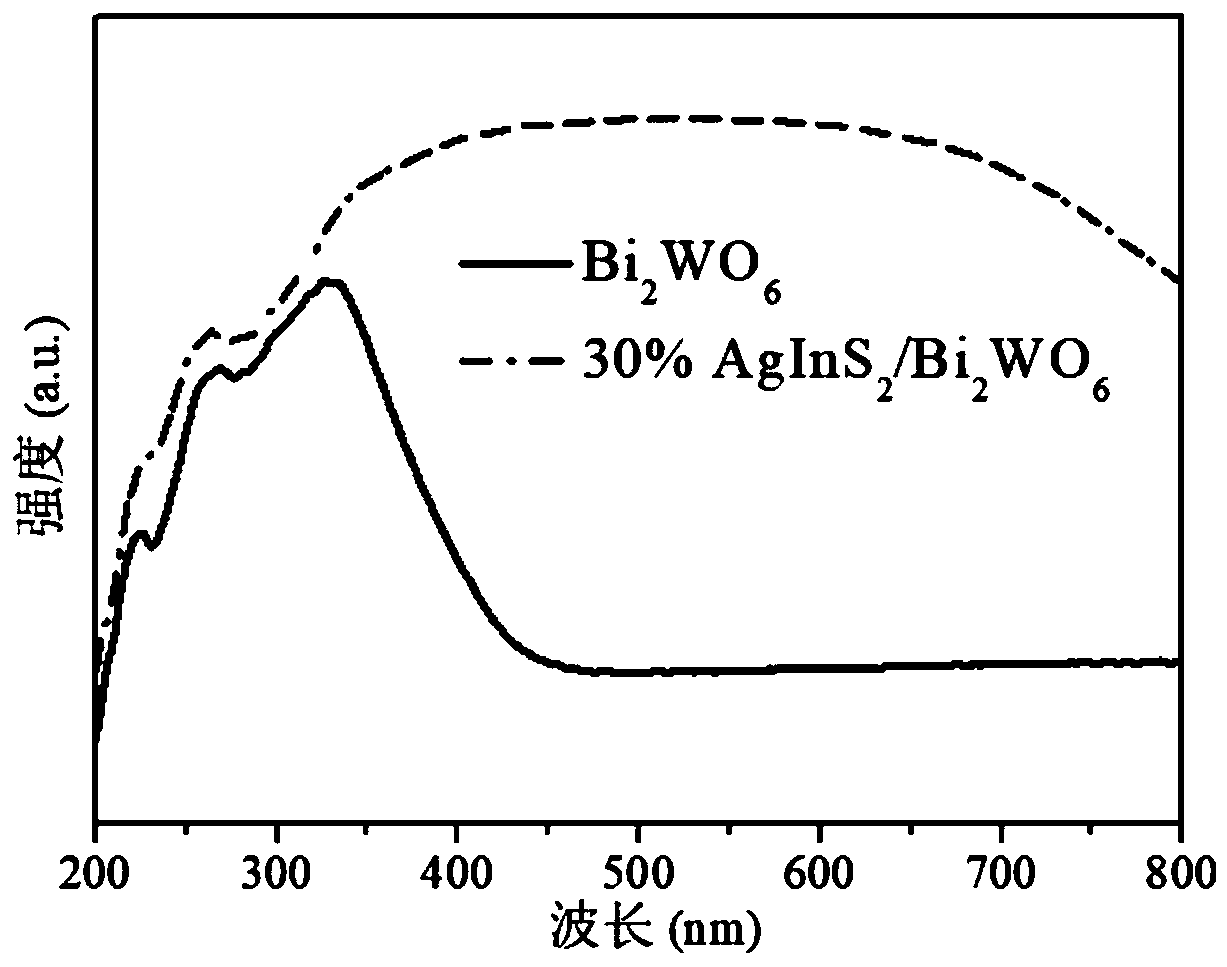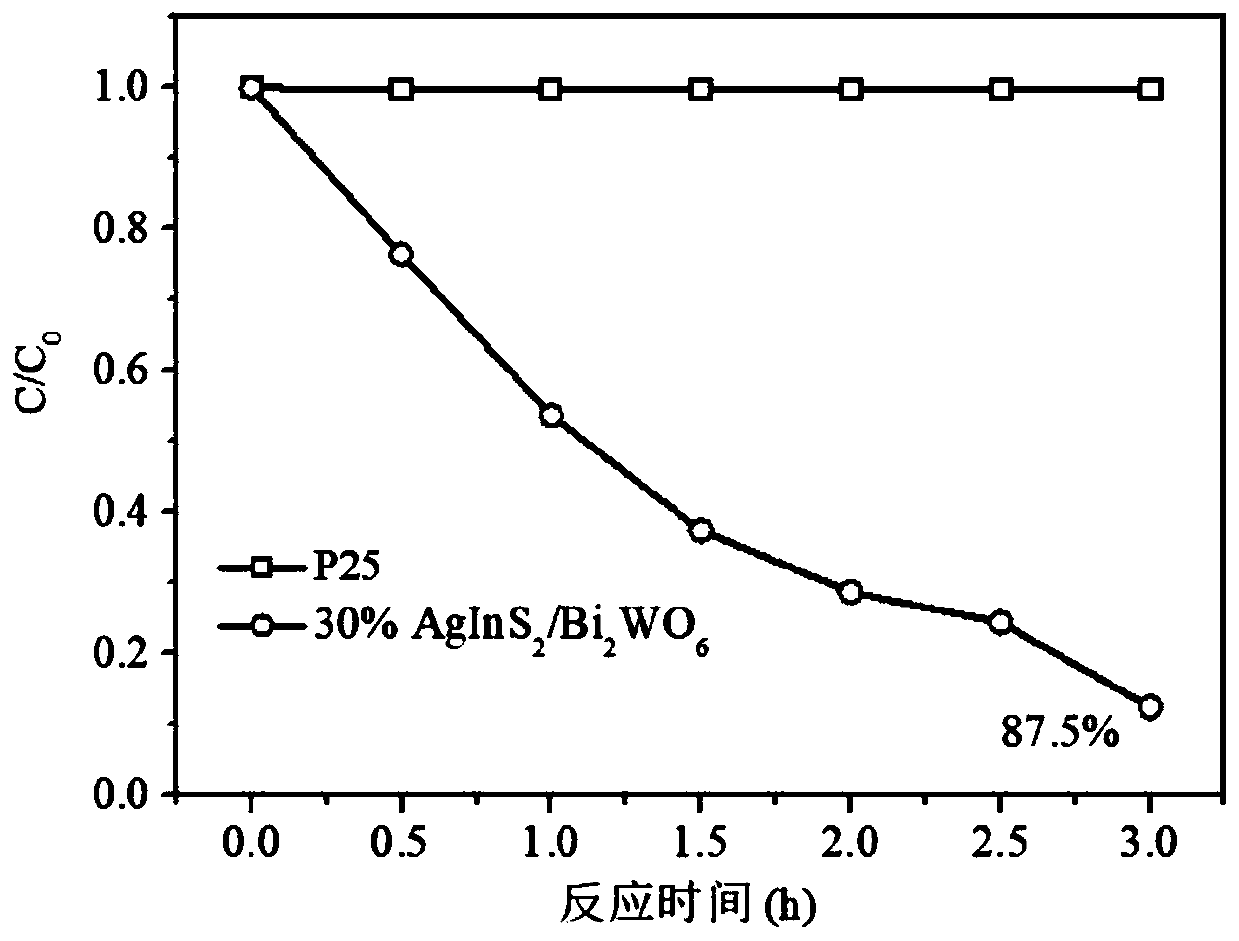a kind of agins 2 /bi 2 the w 6 Preparation method and application of heterojunction nanosheets
A nanosheet and heterojunction technology, applied in chemical instruments and methods, water/sludge/sewage treatment, chemical/physical processes, etc., can solve the problems of poor stability of binary sulfides, easy photocorrosion, and limited development. , to achieve the effect of easy operation, simple process and improved ability
- Summary
- Abstract
- Description
- Claims
- Application Information
AI Technical Summary
Problems solved by technology
Method used
Image
Examples
Embodiment 1
[0029] 0.2g AgNO 3 Dissolve in 96mL water to form AgNO 3 solution; 0.22g InCl 3 Add to AgNO 3 After mixing in the solution, add 0.19g of thiourea and stir for 30min to form a transparent and uniform solution. Add 1.37g of synthesized Bi 2 WO 6 The above solution was added and stirred for 30 minutes. The solution was transferred to a 120mL autoclave lined with polytetrafluoroethylene, pressurized to 1.45atm, placed in an oven for hydrothermal reaction at 160°C for 12h, and cooled naturally to room temperature. Centrifuge and collect the bottom precipitate, wash with deionized water and then with absolute ethanol, and dry at 80°C for 12h to obtain 30% AgInS 2 / Bi 2 WO 6 heterojunction nanosheets. from figure 1 AgInS can be clearly shown on 2 / Bi 2 WO 6 presents flakes, from figure 2 It can be seen that in the visible light range AgInS 2 / Bi 2 WO 6 Has strong absorption.
Embodiment 2
[0031] 0.2gAgNO 3 Dissolve in 96mL ethanol to form AgNO 3 solution; 0.22g InCl 3 Add to AgNO 3 After mixing in the solution, add 0.19g of thiourea and stir for 30min to form a transparent and uniform solution. Add 0.46g of synthesized Bi 2 WO 6 The above solution was added and stirred for 30 minutes. The solution was transferred to a 120mL autoclave lined with polytetrafluoroethylene, pressurized to 1.40atm, placed in an oven for hydrothermal reaction at 120°C for 48h, and cooled to room temperature naturally. Centrifuge and collect the brick-red precipitate at the bottom, wash with deionized water and then with absolute ethanol, and dry at 80°C for 12h to obtain 10% AgInS 2 / Bi 2 WO 6 heterojunction nanosheets.
Embodiment 3
[0033] 0.2gAgNO 3 Dissolve in 96mL ethanol to form AgNO 3 solution; 0.22g InCl 3 Add to AgNO 3 After mixing in the solution, add 0.19g of thiourea, stir for 30min to form a transparent and uniform solution, and 2.29g of synthesized Bi 2 WO 6 The above solution was added and stirred for 30 minutes. The solution was transferred to a 120mL autoclave lined with polytetrafluoroethylene, pressurized to 1.32atm, placed in an oven for hydrothermal reaction at 200°C for 6h, and cooled to room temperature naturally. Centrifuge and collect the brick-red precipitate at the bottom, wash with deionized water and then with absolute ethanol, and dry at 80°C for 12h to obtain 50% AgInS 2 / Bi 2 WO 6 heterojunction nanosheets.
PUM
 Login to View More
Login to View More Abstract
Description
Claims
Application Information
 Login to View More
Login to View More - R&D
- Intellectual Property
- Life Sciences
- Materials
- Tech Scout
- Unparalleled Data Quality
- Higher Quality Content
- 60% Fewer Hallucinations
Browse by: Latest US Patents, China's latest patents, Technical Efficacy Thesaurus, Application Domain, Technology Topic, Popular Technical Reports.
© 2025 PatSnap. All rights reserved.Legal|Privacy policy|Modern Slavery Act Transparency Statement|Sitemap|About US| Contact US: help@patsnap.com



